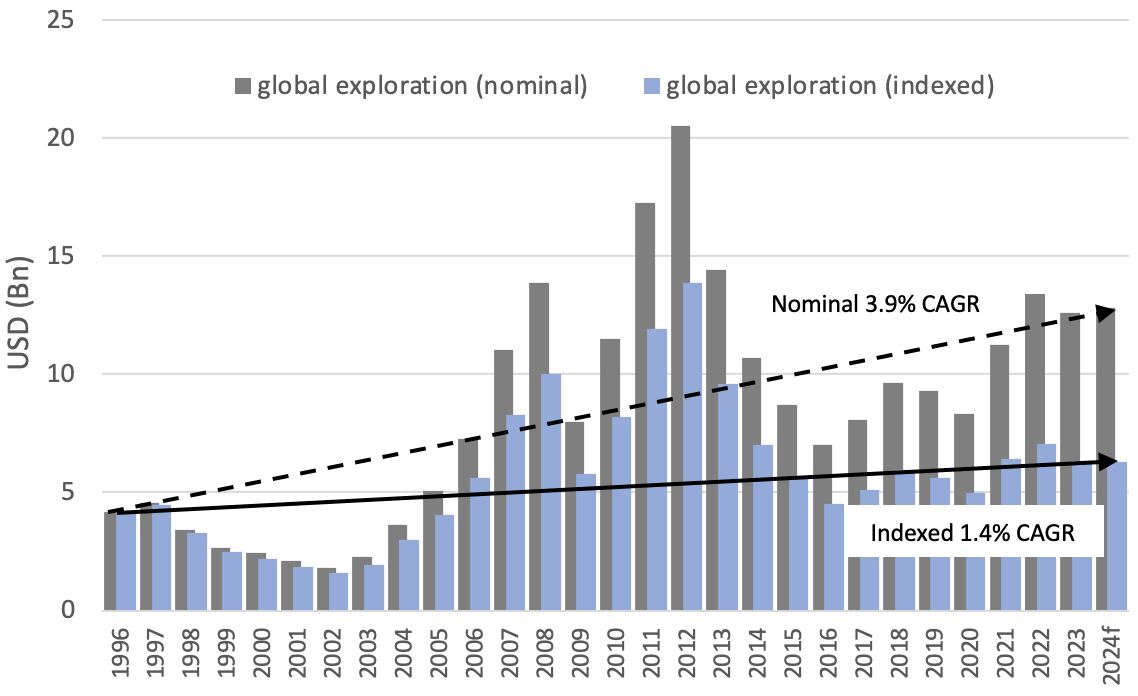Annual global (nonferrous) exploration expenditure from 1996 to 2024f has increased in nominal terms on average by 3.9% pa over the past 29 years. But if we adjust using US CPI, expenditure in real terms is a far more modest 1.4% CAGR.
Despite the fact that the annual production of various commodities, including zinc (+75%), lead (+67%), gold (+34%), silver (+76%), copper (+105%), nickel (+233%) and lithium (+3,188%) have increased materially in the interim, many of the larger deposits currently in production were discovered three to four decades ago. As we highlighted recently, there has been a particular dearth of significant discoveries to replace existing Pb-Zn-Ag VMS deposits. The same argument could be made for gold.
The EU’s dependency on various metal imports ranges between 75% and 100%, depending on the commodity. Of the 30 raw materials that the EU classifies as critical, 19 are predominantly sourced from China.
We subscribe to Resource-based Theory, which in essence, stresses that the whole is greater than the sum of its parts. In particular, returning to the original meaning, encompassing both Ricardian and Penrosian economic theories (as applied to nations). Much of China’s advantage is not only in the ability to secure natural resources (which may, or may not be valuable, rare, difficult to imitate, or non-substitutable), but its ability to dominate downstream processing and manufacturing in a cohesive value chain; creating an economic monolith that is unlikely to be replicated elsewhere for the foreseeable future.
It remains our observation that we are seeing the active dismemberment of the WTO rules-based economic system, and in its place, the gradual implementation of mercantilism and the rise of de-facto supply-chain colonies. This transition is fundamentally being driven by China, mimicking 19th Century Great Britain in order to secure its growing manufacturing sector.
At some point, there will be a rush of investment by Developed Nations into a host of commodities, when it suddenly dawns on them how fraught their supply chains really are.

